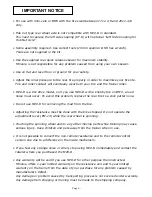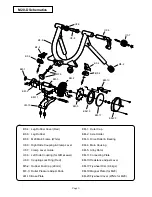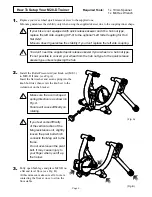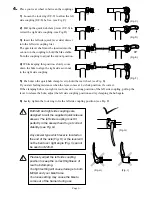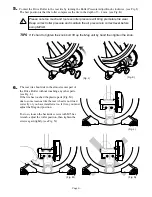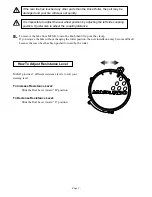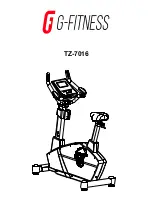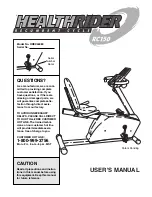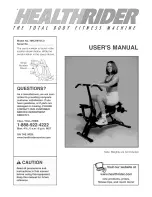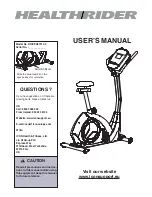
4.
Place your rear wheel in between the couplings.
1)
Loosen the lock ring (UF-9) to allow the left
side coupling (UF-8) be free. (see Fig. C)
2)
Pull up the quick hub clamp lever (UF-6) to
retract the right side coupling. (see Fig. D)
3)
Insert the left side (quick lever side) skewer
into the left side coupling first.
The quick lever shaft must be inserted into the
cut-out on the coupling to hold the bike stable.
Turn the coupling to adjust the cut-out position.
4)
While keeping this position, slowly come
down the bike to align the right side acorn nut
to the right side coupling.
(Fig. C)
(Fig. D)
(Fig. E)
(Fig. F)
5)
Push down the quick hub clamp lever to hold the rear wheel. (see Fig. E)
If you start feeling resistance when the lever comes at 4 o'clock position, it's correct.
If the clamping hub is too tight or too loose due to wrong position of the left side coupling, pull up the
lever to release the bike, adjust the left side coupling position and try clamping the hub again.
6)
Lastly, tighten the lock ring to fix the left side coupling position. (see Fig. F)
Both left and right side couplings are
designed to suit the supplied quick release
skewer. The left side coupling must fit
perfectly in the skewer head to get correct
stability. (see Fig. G)
Any skewer type which lever is located on
the end of the axle (Fig. H) or the lever will
not be bent over right angle (Fig. I) cannot
be used on M20-D.
!
(Fig. G)
(Fig. H)
(Fig. I)
!
Precisely adjust the left side coupling
position to keep the correct thightness of
rear hub clamping.
Too tight setting will cause damage to both
M20-D and your bike frame.
Too loose setting may cause the bike to
come out of the trainer during use.
- Page 5 -


